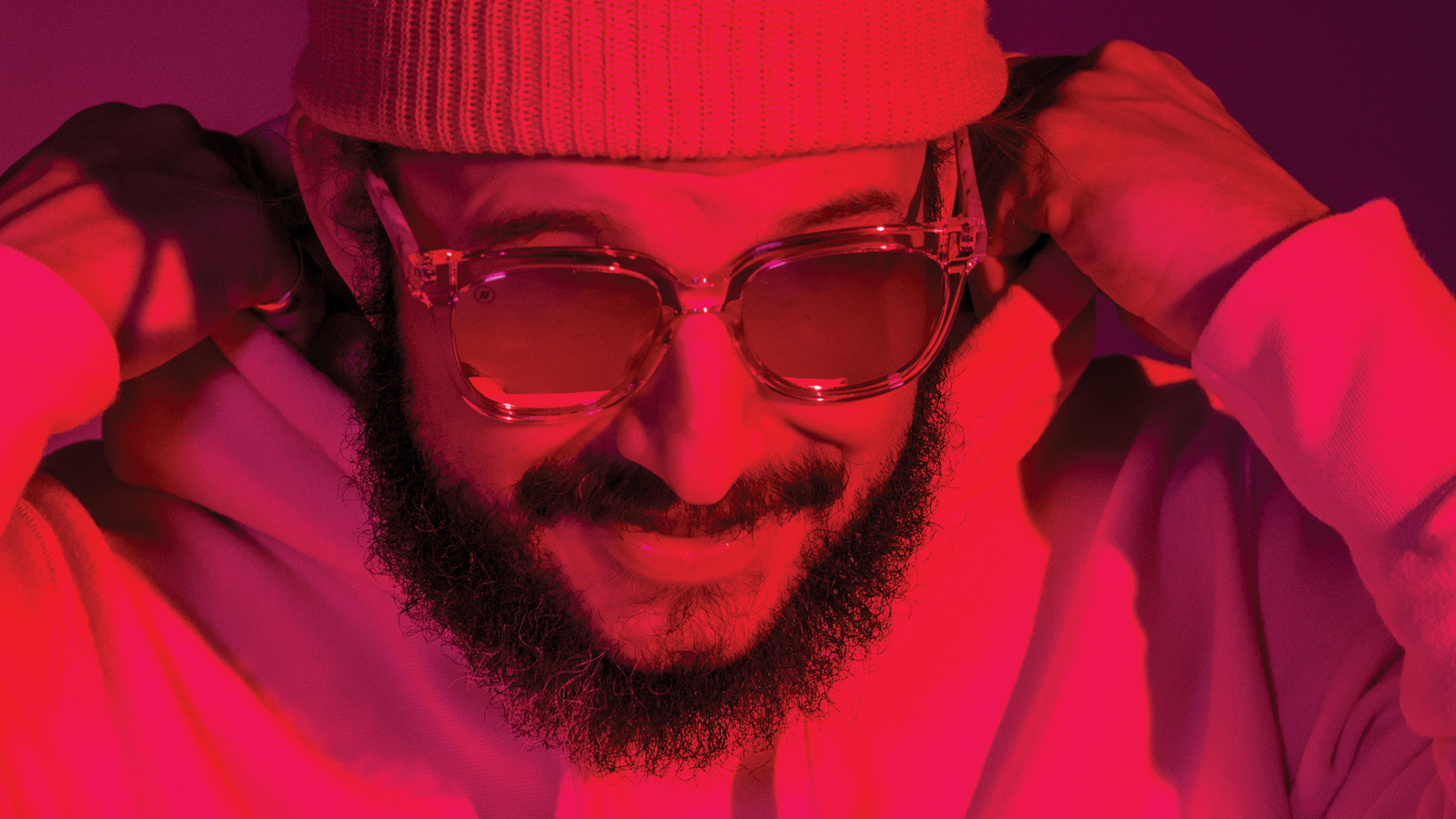10 banjo players to listen to right now
The 10 most influential banjo players to have walked the earth…

When putting together this top 10 of the most influential banjo players of all time, we needed to make a decision.
Do we consider everybody that plays a stringed instrument with a drum for a body, or focus on just the players of what has now arguably become the most popular variant of the banjo, the 5-string, or as The Gibson Company would have it, 'regular' banjo.
Our initial consideration was that it might be difficult to distil the notable exponents of an entire family of instruments down to a top 10. Our thoughts then drifted towards the berating we would surely be subjected to from banjo enthusiasts of various musical persuasions if we stayed within the safe confines of our own particular branch of the banjo family tree.
So in the interest of a quiet life we decided to bite the bullet and attempt to take on the entire family, but with a big disclaimer; we have randomly decide the order in which the players are listed.
Earl Scruggs: 1924-2012
Earl is the undisputed father of bluegrass banjo. Scruggs almost single-handedly devised his own brand new three-fingered approach to the five-string banjo, not only drawing on his own first-hand musical experiences from in and around his native North Carolina, but also integrating musical vocabulary from further afield, most notably the New Orleans jazz that was so popular at the time.
Through his endless observation, tinkering and refinement, Scruggs successfully devised his own heavily stylised musical language. He managed to integrate and approximate blues and boogie-woogie lines while retaining a decent level of compatibility with the music he wanted to be a part of.
Many of his trademark phrases and licks are characterized by the clever integration of open strings and techniques such as hammer-ons, pull-offs and slides. Scruggs first came to the attention of mainstream audiences when he joined Bill Monroe’s Bluegrass Boys in 1945 but after a few years he and Monroe’s guitarist, Lester Flatt left the band to form The Foggy Mountain Boys or Flatt and Scruggs as they later became known. It was with this band that Scruggs recorded the majority of his seminal music.
Get the MusicRadar Newsletter
Want all the hottest music and gear news, reviews, deals, features and more, direct to your inbox? Sign up here.
Listen to: Foggy Mountain Jamboree (1957), Foggy Mountain Banjo (1961), Folk Songs of Our Land (1962).
George Formby: 1904-1961
Players of full-sized banjos will often get all hot under the collar when asked if they play any George Formby. “He played the ukulele,” they shout. True enough, and hopefully he’ll also make it into the uke top 10 as well. However, it was a banjo uke that he played, and what a great player he was too.
Formby’s trademark fast and syncopated right hand technique, often called “splitstroke” still confounds many players today. Although it’s almost impossible to think of George Formby without thinking of the banjo ukulele, it was as a star of film, and later TV that he really made his name. Pretty much all of Formby’s recorded output was originally released as singles.
During the ‘30s and ‘40s these were mostly shellac 10” 78s but later in his career they would have been vinyl 7” 45s. These days there are a multitude of excellent compilations available, most of which will almost certainly have versions of his hits: When I’m Cleaning Windows, My Little Stick Of Blackpool Rock, Leaning On A Lamppost, and Mr. Wu among them.
Listen to: It’s Turned Out Nice Again (2005), The Best Of George Formby (2009).
Bill Keith: 1939-present day
By the time Bill Keith came onto the scene, bluegrass five-string banjo players were becoming musically restless, wondering if there could be more to the instrument. A few players such as Bobby Thompson and Carroll Best began to develop what has now become known as the 'melodic' style, but by far the most well-known of these early pioneers was the young Bostonian Bill Keith.
While Keith was primarily a bluegrass musician, like Scruggs, he actually spent some time as one of Bill Monroe’s Bluegrass Boys, his musical understanding and aspirations were evidently far more eclectic. His ‘76 debut solo album Something Auld, Something Newgrass, Something Borrowed, Something Bluegrass is now regarded as a watershed moment in the evolution of the five-string banjo and features jazz standards such as Jordu and Caravan alongside traditional Irish and American music. There’s even a great version of Auld Lang Syne played almost exclusively on his ‘trick’ tuning pegs, now known as Keith Tuners.
Listen to: Muleskinner, A Pot Pourri of Bluegrass Jam (1973), Something Auld, Something Newgrass, Something Borrowed, Something Bluegrass (1976), Fiddle Tunes For Banjo (1981), Banjoistics (1984).
Wade Ward: 1892-1971
Ward was an important figure in the world of old-time music, and especially the banjo. His contributions to the clawhammer style of playing the five-string banjo have helped shape the way many, if not all, old-time banjo players play today.
Ward lived as a farmer in Independence Virginia his entire life and never became a professional musician, although he did perform and compete regularly at the world famous Galax Old Fiddlers Convention and travelled with various bands.
Most notable was the fabulously named Ballard Creek Bogtrotters, with his brother, neighbour, nephew and their family doctor (before you ask, it wasn’t a duo) as well as recording several solo albums he was also recorded extensively by Alan Lomax for the Library of Congress in the American Folklife Centre.
Listen to: Music of Roscoe Holcomb and Wade Ward (1962), The Original Bog Trotters (1968), Wade Ward: Banjo & Fiddle (1961).
Béla Fleck: 1958-present day
Fleck is arguably one of the most accomplished musicians to have ever picked up the five-string banjo.
When describing Fleck, versatile doesn’t really begin to cover it. His one-man musical crusade over the past few decades has completely changed people’s perception of what the five-string banjo is capable of. You don’t need to take my word for it either; the record books confirm that Béla Fleck has been nominated in more musical categories than any other musician in Grammy history! Fleck took the staple Scruggs, Reno and melodic styles, thoroughly mastered and developed them, apparently in about three weeks, and then set about assimilating stringed instrument techniques from just about every genre and instrument on the planet.
Add to this his unquestionable musicality and improvisational ability, and the end result is, well almost intolerable actually, at least for us post Béla banjo players, trying to find the odd musical gap that he’s not already filled and won a Grammy for.
Listen to: Crossing The Tracks (1979), Deviation (1984), Drive (1988), Tales From The Acoustic Planet (1995), Perpetual Motion (2001).
Pete Seeger: 1919-2014
If Seeger did nothing else, his 1948 instructional book, How to Play The Five-String Banjo would justify his place in this top 10. It’s amazing how many notable players still cite this book as their beginner’s bible.
It’s also worth noting that some of the technical terms still very much in use by many fretted instrumentalists, such as hammer on and pull off, were first coined by Seeger in this very book! As a banjo player, by today’s standards he was fairly idiosyncratic, drawing partly on old-time clawhammer or frailing technique, partly on Scruggs-esque three-finger picking and the rest being made up by himself, largely from folky guitar technique and his need to accompany his own politically driven protest songs.
It was with the Weavers that Seeger first achieved public acclaim but before that, during the build up to America entering WW2, he was also a member of the Young Communist League and the Almanac Singers, along with the great Woody Guthrie. As if all this wasn’t enough, Seeger also designed his own style of banjo that eventually went into production and is still available today, known as The Seeger long neck banjo
Listen to: The Weavers at Carnegie Hall (1955), Song and Play Time (1960), If I Had a Hammer (1998).
Don Reno: 1927-1984
Reno was another of the chief movers and shakers in the banjo’s initiation into bluegrass music. Chronologically and geographically, both Scruggs and Reno were contemporaries, probably influenced by similar music and musicians, and ultimately trying to achieve a similar goal, but the end results were actually quite different.
Reno’s main contribution to bluegrass banjo was what has now become known as single-string playing, but for many years this was just called Reno style. The idea being that you use your thumb and index finger to play select passages and licks as if they were the down and up strokes of a plectrum.
Whilst Reno’s sound was more of an acquired taste, due to the brashness of his approach, especially compared to Scruggs, Bela Fleck, and subsequently numerous ‘post Fleck’ players have since taken Reno’s lead, refining it and making it a massive part of modern banjo playing. It’s also worth noting that Reno, along with Arthur Smith was half of the original Duelling Banjos duo (originally called Feudin’ Banjos). When the film Deliverance was released, the tune became the subject of a lengthy court battle.
Listen to: On Stage (1958), Feudin’ Again (1979), Fastest Five Strings Alive (1976).
Barney McKenna: 1939-2012
At the beginning of the 1960s, McKenna, along with his band The Dubliners, introduced the banjo to traditional Irish music. At first this was met with mixed feelings from fans and the music’s establishment, but today the tenor banjo has gone on to become one of the most popular instruments in the genre.
Apparently, given the choice McKenna would have, at least at first, much preferred to have played the mandolin. The lack of a suitable instrument around the McKenna house and the timely presence of an unused banjo is reputed to be largely responsible for this famous pairing. There were probably plenty of unemployed banjos (and one can only assume banjo players) kicking around Ireland at the time, due to the instrument’s relatively short-lived popularity at the turn of the century. McKenna played a 19-fret (four string) tenor banjo - tuned one octave below the fiddle (GDAE).
Listen to: The Dubliners - A Drop of The Hard Stuff (1967), The Dubliners - More of The Hard Stuff (1967), The Dubliners - 25 years Celebration (1987).
Charlie Poole: 1892-1931
Johnny Cash may well have been thinking about Charlie Poole when he said: “Style is a function of your limitations, more so than a function of your skills.” Charlie Poole’s approach to the banjo was largely dictated by an injury that he’d incurred after betting someone he could catch a baseball without a glove.
This wager resulted in him breaking his thumb and ending up with an arch in his right hand. This didn’t seem to slow him down though. With his band, The North Carolina Ramblers, Poole went on to make and sell an impressive amount of records. The band’s 1925 release Don’t Let Your Deal Go Down Blues sold 102,000 copies. This number is especially remarkable if you consider how few people at that time actually owned record players.
It wasn’t only his banjo playing he became well known for, he also made quite a name for himself for his ‘Olympic standard’ substance abuse, with the stories painting him as a kind of pre-war, banjo playing equivalent of Keith Moon. A 13-week drinking binge eventually killed him at the age of 39.
Listen to: Charlie Poole And The Roots Of Country Music - You Ain’t Talkin’ To Me (2005).
Eddie Peabody: 1902-1970
Dubbed ‘The King of The Banjo’, Peabody quickly became a popular solo performer on the American Vaudeville circuit playing his plectrum banjo. The plectrum banjo began life as a five-string with the short fifth string removed, enabling players to ditch their fingerstyle technique in favour of a much louder plectrum style.
This was far more suited to the larger (un amplified) concerts and band situations the instrument was now finding itself. Peabody’s technique was extraordinary, especially his right hand, and his popularity is largely responsible for the plectrum banjo making the transition from modified five-string to bona fide instrument. Search YouTube for ‘Eddie Peabody playing two banjos’ and prepare to be astounded.
After the Second World War, when the Vaudeville circuit was beginning to dry up, Peabody successfully moved into TV and radio. As well as playing a big part in the development of the Vegavox resonator banjo he also delved into the murky world of electric banjos with his Banjoline - a six-string instrument, tuned the same as a standard plectrum banjo (CGBD) but with octave pairs on the third and fourth strings.
Listen to: The Banjo Wizardry of Eddie Peabody (1956), When You’re Smiling (1959), Mr. Banjo’s Back In Town (1967).
“Its mission is simple: unleash the power of any amplifier or line-level source without compromise”: Two Notes promises a “watershed” in tube amp control with the Torpedo Reload II
MusicRadar deals of the week: Enjoy a mind-blowing $600 off a full-fat Gibson Les Paul, £500 off Kirk Hammett's Epiphone Greeny, and so much more









